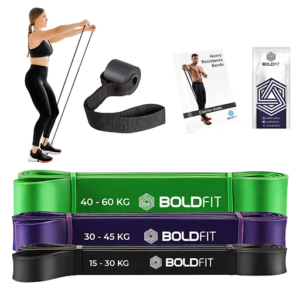How to Get Genuine Product Reviews Before You Buy
Reviews may either support or undermine your choice to buy a product in the age of Internet shopping. From gadgets to cosmetics, consumer comments usually tip the scales. Not all evaluations, therefore, are equivalent. Many are phony, prejudiced, or sponsored, which causes buyer’s regret and uncertainty. Knowing how to distinguish between honest reviews and tainted ones can help you more as false marketing strategies proliferate.
A Guide to Finding Reliable Product Reviews Before Making a Purchase
This post will walk you through practical techniques to locate real product evaluations prior to your next buy.
- Know The Value Of Real Reviews
Authentic product reviews enable customers to choose wisely. Based on actual life experiences, they provide insights regarding an item’s quality, utility, and durability. Unlike promotional material, actual evaluations address both good and bad aspects, therefore providing a fair perspective. Relying on false or deceptive evaluations might lead you to spend your money on subpar goods or experience performance problems not mentioned upfront. Therefore, knowing the value of genuine feedback will help you avoid poor investments.
- Be Aware Of Fake Review Red Flags
Your quest for trustworthy reviews starts with learning to spot the indicators of phony ones. Reviews that are too positive without providing particular information about the item might raise red flags. A product page with hundreds of five-star ratings in a short period might also be the consequence of review manipulation. Look for excessive generic language, same sentence patterns, and repeated words. These are usually indications of paid-for or automated evaluations. Your first step to discovering trustworthy viewpoints is becoming aware of these signals.
- Search For Verified Purchases
If the reviewer really purchased the item via that site, most respected e-commerce sites mark reviews as “Verified Purchase.” Though there is no certainty of good comments, this is a good sign of sincerity. Since they originate from actual consumers rather than marketers or bots, verified evaluations are usually more reliable. But don’t depend only on this label. Verified users may still write prejudiced or motivated evaluations. Instead, consider this marker as one component of your whole assessment procedure.
- Cross-Check Using Several Sources
When judging product reviews, never rely on one source. A more thorough method includes looking at many sites like Amazon, Flipkart, Google Reviews, YouTube, Reddit, and specialized forums. Reading reviews from many different sites provides a well-rounded knowledge of the product. For example, user-generated material on Reddit or Quora often includes sincere, thorough conversations that go beyond simple remarks. Reviews of YouTube videos can provide visual examples of how a product functions in real-time. Using many sources raises the likelihood of finding honest viewpoints.
- Investigate Independent Product Review Sites
Websites devoted to product reviews often include thorough analyses and expert opinions. Websites such as Trusted Reviews, TechRadar, CNET, and Wirecutter focus on testing and assessing goods in many different areas. Usually open about affiliate connections or sponsorships, these sites adopt a consistent review approach. Though they could make money via product links, their trustworthiness depends on the depth and quality of their evaluations. Reading a well-researched article or comparison guide may be more helpful than scanning hundreds of one-line user comments.
- Look At Social Media Discussions
Social networking sites are full of raw user experiences and uncensored views. Users on Instagram, Facebook, X—formerly Twitter—and even TikHub post their honest responses—both good and bad. Searching product hashtags or browsing public comments beneath brand postings might expose genuine feedback that doesn’t always reach official product sites. Take note of how people interact with one another. Comment section conversations may provide a more complex perspective on product performance than more conventional assessments.
- Be On The Lookout For Influencer Content Carefully
Though it has its challenges, influencer marketing is very effective. It is hard to tell if their evaluations are impartial, as influencers could be paid to promote items or get them for free. Many content producers, therefore, openly mark their movies or postings as “sponsored” or “gifted” in accordance with advertising rules. Seek for influencers who are open about alliances and who have a track record of providing fair views. Examining material from many influencers also helps you identify promotional tendencies or exaggerations.
- Explore The Bad Reviews
While many begin with favorable evaluations, critical comments might provide a more insightful analysis. Discontented consumers usually point out problems with the goods, production problems, or poor customer service—issues glowing evaluations prefer to ignore. Just because a product has some negative ratings doesn’t mean you should stay away from it. Look for trends instead. Should several individuals bring up the same concern, it is likely a real one. Conversely, one or two very negative evaluations might arise from unreasonable expectations or isolated events.
- Interact With The Critics
Many websites let users reply to reviews or pose inquiries. Interacting with critics may provide further background or clear questions. For instance, you may enquire about device use frequency or under what circumstances if someone brings up bad battery life in a tech product review. Reviewers sometimes like the chance to provide more thorough comments; this kind of direct engagement might expose material not included in the initial article. It also enables you to interact with actual people as opposed to generic comments.
- Doubt Perfect Scores
Every item has flaws. Should you come across a product with almost no criticism and hundreds of five-star reviews, pause. Realistically, any product will have some area for development. A more honest feedback profile, in fact, is generally indicated by a combination of high, mid-range, and poor ratings. Trust items with a variety of viewpoints as they are more likely to represent real user experiences. Review fraud or motivated posting might cause overwhelmingly excellent evaluations, particularly without much information.
Conclusion
Every wise consumer should be able to negotiate the ocean of viewpoints in a digital market packed with reviews, both real and false. There are many methods to ensure the input you depend on is real, from seeing red flags to using independent platforms and interacting with reviews. Confidence in buying begins with research, asking the correct questions, and rejecting every five-star review at face value. These policies increase your likelihood of discovering items that really live up to their claims.














Post Comment